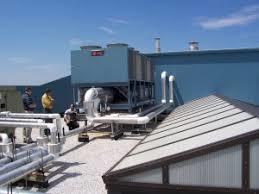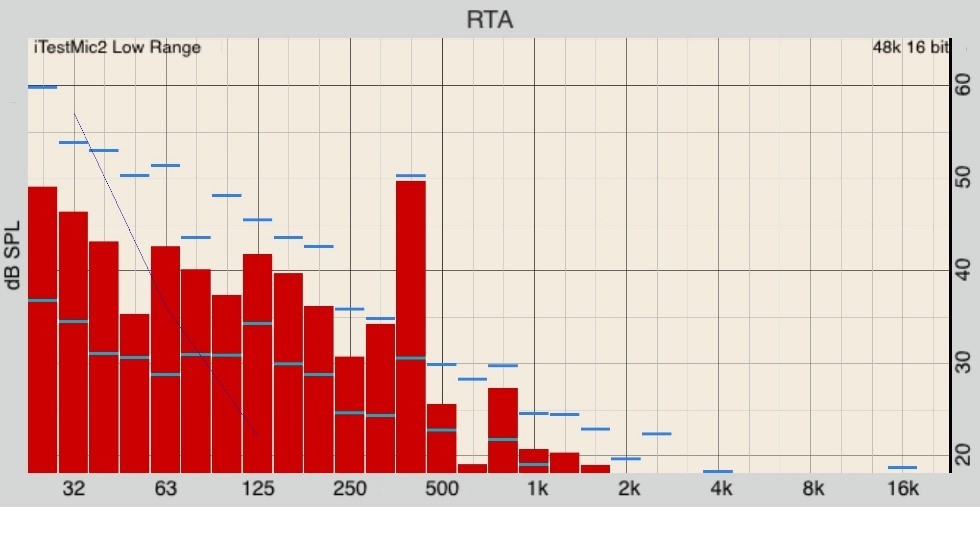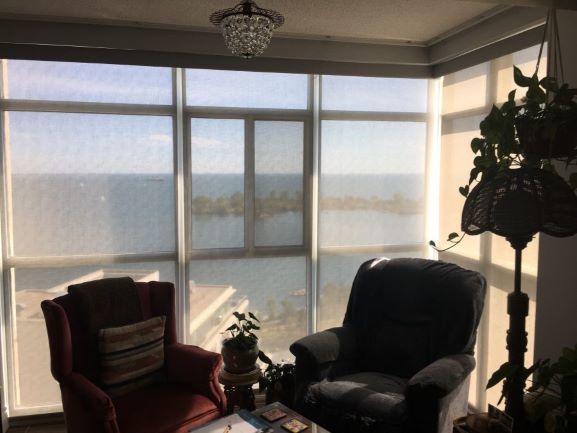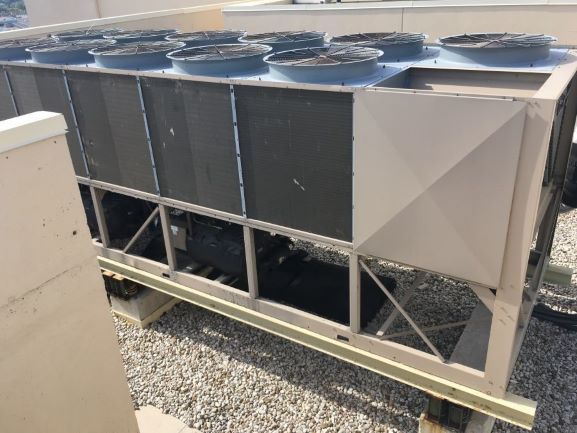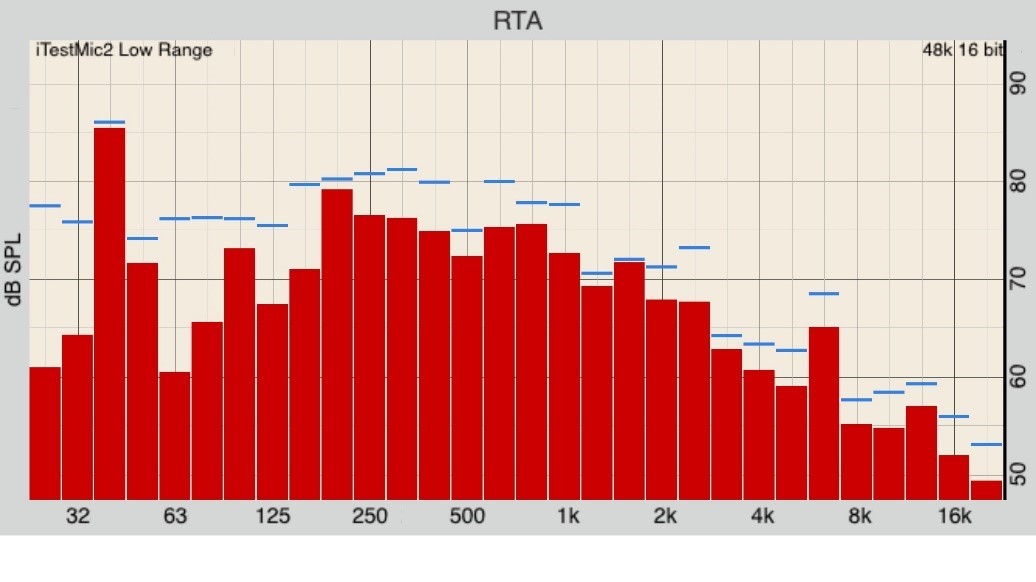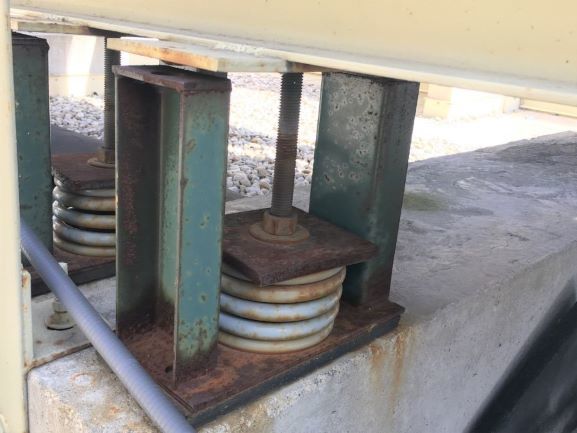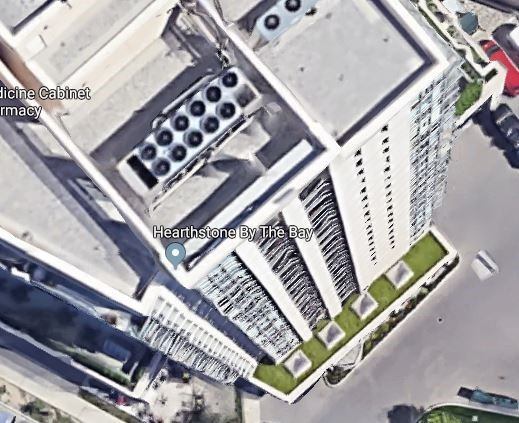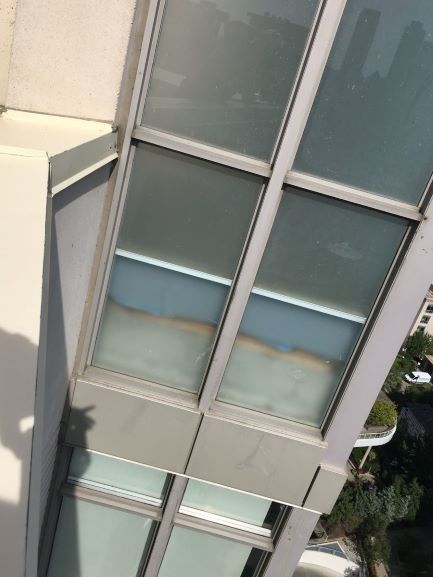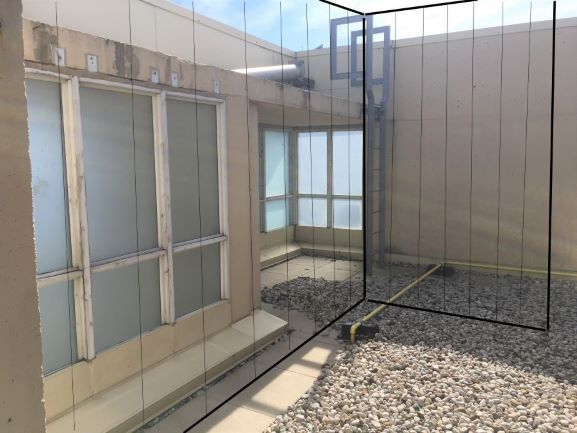A client, a condominium board, asked me to assess an intractable mechanical noise level in a condominium apartment that is located below a roof-mounted chiller.
More...
Roof-top unit equipment
Roof-top unit mechanical equipment often causes mechanical noise complaints from condominium residences located below the equipment. All mechanical equipment vibrates to some degree [reference 1]. Vibration and noise control can be broken into three components: source, path and receiver.
The only sure way off cutting the path of objectionable mechanical noise is an isolation system at the source of the mechanical noise.
Mechanical noise complaint
In this specific mechanical noise complaint situation, I have tested a noise level in the complainant’s condominium apartment. Screen capture of one of the tests is in Image 1 below. The noise level is 45 dBA with almost all of the energy in the 400 Hz frequency component.
Image 1 - 1/3 octave spectrum of a sound pressure level in condo apartment = 45 dBA
Noise in the condominium apartment (Image 2) is highly variable and changes frequently in level as well as in tonal characteristics. The noise often has a strong tonal character, with 400 Hz tone clearly audible.
Average of five tests taken in the apartment registered sound pressure level 42.9 dBA and at 400 Hz 48.0 dB (unweighted).
Image 2 - Condo apartment with curtain wall windows.
I was not able to measure ambient noise in the condominium apartment with the roof-top unit chiller off. There was some traffic noise audible during the test. However, the ambient noise does not contain the 400 Hz frequency component visible in the tested spectrum. Therefore, the level indicated at this frequency is accurate and not affected by ambient noise.
Permitted levels of noise
There are no legislative standards in Ontario for ambient noise level or mechanical noise level in residential units. Toronto bylaw [2] rules against noise that is defined as “any unwanted sound” that is “clearly audible”. I think this applies to the apartment in question.
The maximum level of ambient noise, including mechanical noise, recommended by ASHRAE for apartments is 35 dBA [3].
Noise level near the roof-top unit
I have then tested the noise level near the roof-top unit chiller (Image 3). Screen capture of the test is in Image 4. The reading is 88.6 dBA with most of the energy in the 40 Hz frequency band, but noise is also present in higher frequencies. However, there is no 400 Hz peak as observed in the apartment.
Image 3 - Roof-top chiller
Image 4 - 1/3 octave spectrum of sound pressure level near roof-top chiller = 88.6 dBA
Noise next to the roof-top unit is very loud and fluctuates with changes in the chiller’s load.
Average of three tests on the roof, next to the chiller, is sound pressure level 85.2dBA, and at 400 Hz 86.7 dB
Noise reduction between the roof-top unit and complainant’s condo apartment
Noise level difference between the average of several readings on the roof and in the condominium apartment is overall 42.3 dB and at 400 Hz 38.7 dB.
The ceiling partition over the complainant’s condominium apartment is at least 12” thick concrete slab and has sound attenuation of at least STC 56 and attenuates at 400 Hz at least 53 dB [estimated from 4].
As shown in the above paragraph, the tested noise reduction is much less.
Recommended noise remediation for condominium board
Mounting of roof-top chiller
I have noted defects in chiller mounting. The chiller is presently installed on vibration isolation supports. There is also about a ½-inch neoprene pad under each support. Two of the spring supports (Image 5) are overloaded (over-compressed) and need to be replaced by stronger springs. This will reduce vibrations transmitted to the building structure. However, I do not believe that this is the primary source of noise in the complainant’s apartment.
Image 5 - Over-compressed isolation supports
Airborne noise
Potentially, airborne noise from the roof-top unit could be transmitted to the condominium apartment through ceiling structure and through exterior walls/windows.
The roof structure likely has enough sound isolation to attenuate the airborne noise of the chiller. I believe that the dominant path for the noise from the roof to the complainant’s apartment is by the vibration of the curtain wall that extends from the rooftop (adjacent to chiller) all the way down the building’s side (Images 6 and 7).
Image 6 - Satellite view of the building showing roof-top chiller and curtain wall
Sound transmission effect of curtain walls
There are many references in literature discussing vertical sound transmission through curtain walls, including an article in this blog. One reference [5] estimates that the vertical sound attenuation of curtain walls is 35 dB to 46 dB. The tested sound attenuation between the chiller and the complainant’s apartment is within this range. Another reference [6] demonstrates that curtain walls exhibit reduced noise transmission at frequencies 400 to 500 Hz. This phenomenon is also visible in the presented test results.
Image 7 - View of the side of the building from the rooftop
I, therefore, conclude that the dominant noise transmission path to the affected apartment is through the curtain wall. To reduce this effect, I have recommended shielding the exterior wall, near the roof-top chiller, with an acoustic noise barrier, as illustrated in Image 8.
I have also recommended to the condominium board making the sides of walls facing the chiller sound-absorbing, by installing sound absorbers on all walls facing the chiller.
Image 8 - Sketch of the acoustic noise barrier wall
References
[1] Robert Simmons, Vibration Isolation, ASHRAE Journal (American Society of Heating, Refrigeration and Air-Conditioning Engineers), August 2007.
[2] Toronto bylaw noise complaints
[3] ASHRAE recommended noise levels
[4] Master Handbook of Acoustics, Sixth Edition, by F. Everest and K. Pohlmann, McGrawHill 2015, page 338
Your feedback is always appreciated. Please use the form below to submit your feedback. Your email address and your message are completely confidential, accessible only by the author.
